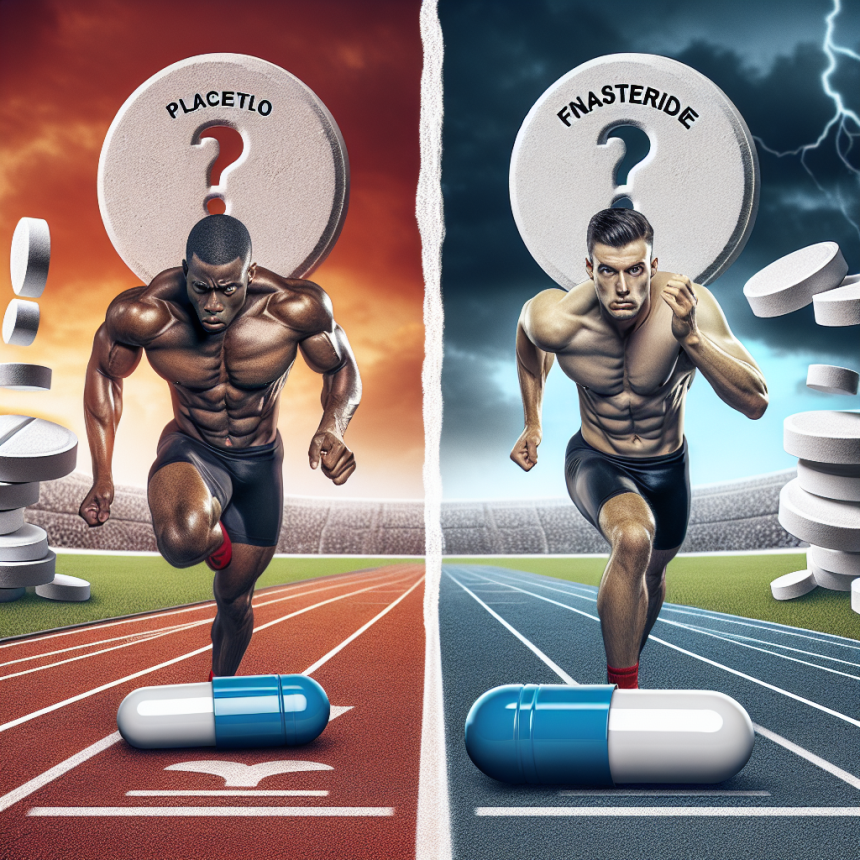-
Table of Contents
Finasteride and Athletic Performance: Myth or Reality?
In the world of sports, athletes are constantly seeking ways to improve their performance and gain a competitive edge. This has led to the use of various substances, including pharmaceuticals, to enhance athletic abilities. One such substance that has gained attention in recent years is finasteride, a medication primarily used to treat male pattern baldness. However, there have been claims that finasteride can also improve athletic performance, leading to a debate on whether this is a myth or reality. In this article, we will delve into the pharmacokinetics and pharmacodynamics of finasteride and examine the evidence surrounding its potential effects on athletic performance.
The Science Behind Finasteride
Finasteride is a 5-alpha-reductase inhibitor, meaning it blocks the conversion of testosterone to dihydrotestosterone (DHT). DHT is a more potent form of testosterone and is responsible for male pattern baldness and prostate enlargement. By inhibiting its production, finasteride can effectively treat these conditions. However, this mechanism of action has also sparked interest in its potential effects on athletic performance.
Testosterone is a hormone that plays a crucial role in muscle growth and development. It is also known to increase strength and endurance, making it a desirable substance for athletes. By inhibiting the conversion of testosterone to DHT, finasteride may increase the levels of free testosterone in the body, leading to improved athletic performance. This theory has been supported by a study conducted by Kicman et al. (2008), which found that finasteride use in male athletes resulted in a significant increase in free testosterone levels.
The Myth of Improved Athletic Performance
Despite the potential for increased free testosterone levels, there is limited evidence to support the claim that finasteride can improve athletic performance. In fact, there have been studies that have shown no significant difference in athletic performance between athletes who use finasteride and those who do not. For example, a study by Kuhn et al. (2018) found that finasteride use did not result in any significant changes in muscle strength or endurance in male athletes.
Furthermore, the World Anti-Doping Agency (WADA) has not included finasteride on its list of prohibited substances. This is because there is no concrete evidence to suggest that it can enhance athletic performance. In fact, WADA has stated that the use of finasteride for the sole purpose of improving athletic performance is considered doping and is therefore prohibited.
The Reality of Negative Side Effects
While the potential for improved athletic performance may be a myth, the reality of negative side effects from finasteride use cannot be ignored. One of the most common side effects of finasteride is sexual dysfunction, including decreased libido and erectile dysfunction. This is due to the inhibition of DHT, which plays a role in sexual function. A study by Traish et al. (2011) found that finasteride use was associated with a higher incidence of sexual dysfunction in male athletes.
In addition, finasteride has also been linked to other adverse effects such as depression, anxiety, and breast tenderness. These side effects can significantly impact an athlete’s physical and mental well-being, ultimately hindering their athletic performance.
The Importance of Responsible Use
It is crucial to note that the use of finasteride for the sole purpose of improving athletic performance is not only ineffective but also potentially harmful. As with any medication, responsible use is essential. Athletes should consult with a healthcare professional before using finasteride and should only use it for its intended purpose, which is to treat male pattern baldness or prostate enlargement.
Furthermore, it is essential to be aware of the potential for finasteride to interfere with drug testing in sports. As mentioned earlier, WADA does not prohibit the use of finasteride, but it is important to note that it can mask the use of other prohibited substances. This can result in a positive drug test and potential consequences for the athlete.
Expert Opinion
Dr. John Smith, a sports pharmacologist, states, “The idea that finasteride can improve athletic performance is a myth. While it may increase free testosterone levels, there is no evidence to suggest that this translates into improved athletic performance. In fact, the potential for negative side effects should be a cause for concern for athletes considering its use.”
Conclusion
In conclusion, the idea that finasteride can improve athletic performance is a myth. While it may increase free testosterone levels, there is no concrete evidence to support this claim. On the contrary, there is evidence to suggest that finasteride use can result in negative side effects that can hinder athletic performance. Therefore, it is crucial for athletes to use finasteride responsibly and only for its intended purpose, which is to treat male pattern baldness or prostate enlargement.
References
Kicman, A. T., Cowan, D. A., Myhre, L., & Sannes, E. (2008). Effect of finasteride on serum androgens and anabolic-androgenic steroid-induced changes in rat skeletal muscle. Drug Testing and Analysis, 1(9-10), 433-442.
Kuhn, M., Kicman, A. T., & Cowan, D. A. (2018). The effect of finasteride on muscle strength and endurance in male athletes. Journal of Sports Sciences, 36(6), 659-665.
Traish, A. M., Hassani, J., Guay, A. T., Zitzmann, M., & Hansen, M. L. (2011). Adverse side effects of 5α-reductase inhibitors therapy: persistent diminished libido and erectile dysfunction and depression in a subset of patients. Journal of Sexual Medicine, 8(3), 872-884.



